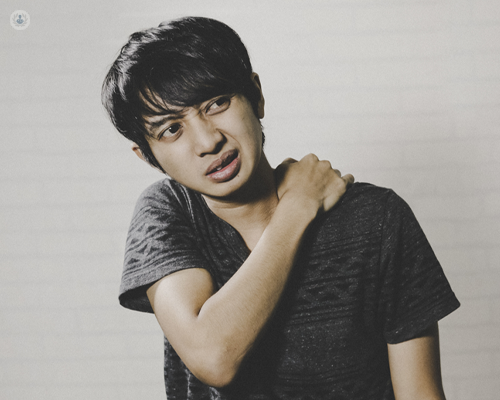Sports-related shoulder dislocations: Causes, risks and effective treatments
Autore:Shoulder dislocations are a common injury in sports, particularly in activities that involve high-impact collisions, falls, or overhead motions. Athletes participating in rugby, football, swimming or weightlifting are at increased risk due to the significant strain placed on the shoulder joint.

What causes shoulder dislocations in sports?
The shoulder joint is highly mobile, which makes it more susceptible to dislocations. Common causes include:
- Trauma or collisions: Contact sports like rugby or football can result in high-impact hits, forcing the shoulder out of its socket.
- Falls: A fall onto an outstretched arm during sports like skiing, cycling, or gymnastics can dislocate the shoulder.
- Overhead movements: Repetitive strain from swimming, throwing or weightlifting can weaken ligaments, leading to instability and dislocation.
Risks associated with shoulder dislocations
Dislocating a shoulder can have short- and long-term consequences, including:
- Recurrent dislocations: Once the shoulder is dislocated, the risk of repeat dislocations increases due to weakened ligaments and tissues.
- Tissue damage: Injuries such as torn rotator cuffs, labral tears or nerve damage can accompany a dislocation.
- Arthritis: Chronic instability increases the risk of developing arthritis in the shoulder over time.
What are the effective treatments for shoulder dislocations?
Prompt and appropriate treatment is essential for recovery and preventing further injuries.
- Initial management:
- Relocation of the joint: A medical professional will carefully manipulate the shoulder back into place.
- Pain relief: Anti-inflammatory medications and cold compresses help manage pain and swelling.
- Immobilisation: A sling is often used for a few weeks to allow the joint to heal.
- Rehabilitation:
Physical therapy plays a key role in restoring strength, flexibility and stability. A physiotherapist will guide the patient through exercises such as:- Range-of-motion exercises to restore mobility.
- Strengthening exercises to support the rotator cuff and stabilise the joint.
- Proprioception training to improve body awareness and reduce the risk of reinjury.
- Surgical options:
For recurrent dislocations or significant tissue damage, surgical intervention may be necessary. Procedures include:- Arthroscopic stabilisation: Minimally invasive surgery to repair torn ligaments or the labrum.
- Latarjet procedure: A bone graft is used to reinforce the front of the shoulder socket for additional stability.
- Rotator cuff repair: If the dislocation damages the rotator cuff, surgical repair may be required.
How can I prevent shoulder dislocations in sports?
Prevention strategies are key for athletes at risk of shoulder dislocations. These include:
- Strength training: Building shoulder and core strength to support the joint.
- Flexibility exercises: Ensuring proper mobility to avoid overstressing the joint.
- Protective gear: Using padded equipment in contact sports to reduce the risk of trauma.
- Technique correction: Proper form during overhead movements or falls can reduce injury risk.
Sports-related shoulder dislocations are common but manageable with proper care. Early intervention, targeted rehabilitation, and - when necessary - surgical treatment can restore joint function and stability, helping athletes return to their sports safely. If you’ve experienced a shoulder dislocation, consulting an orthopaedic specialist is crucial for tailored treatment and long-term prevention.


